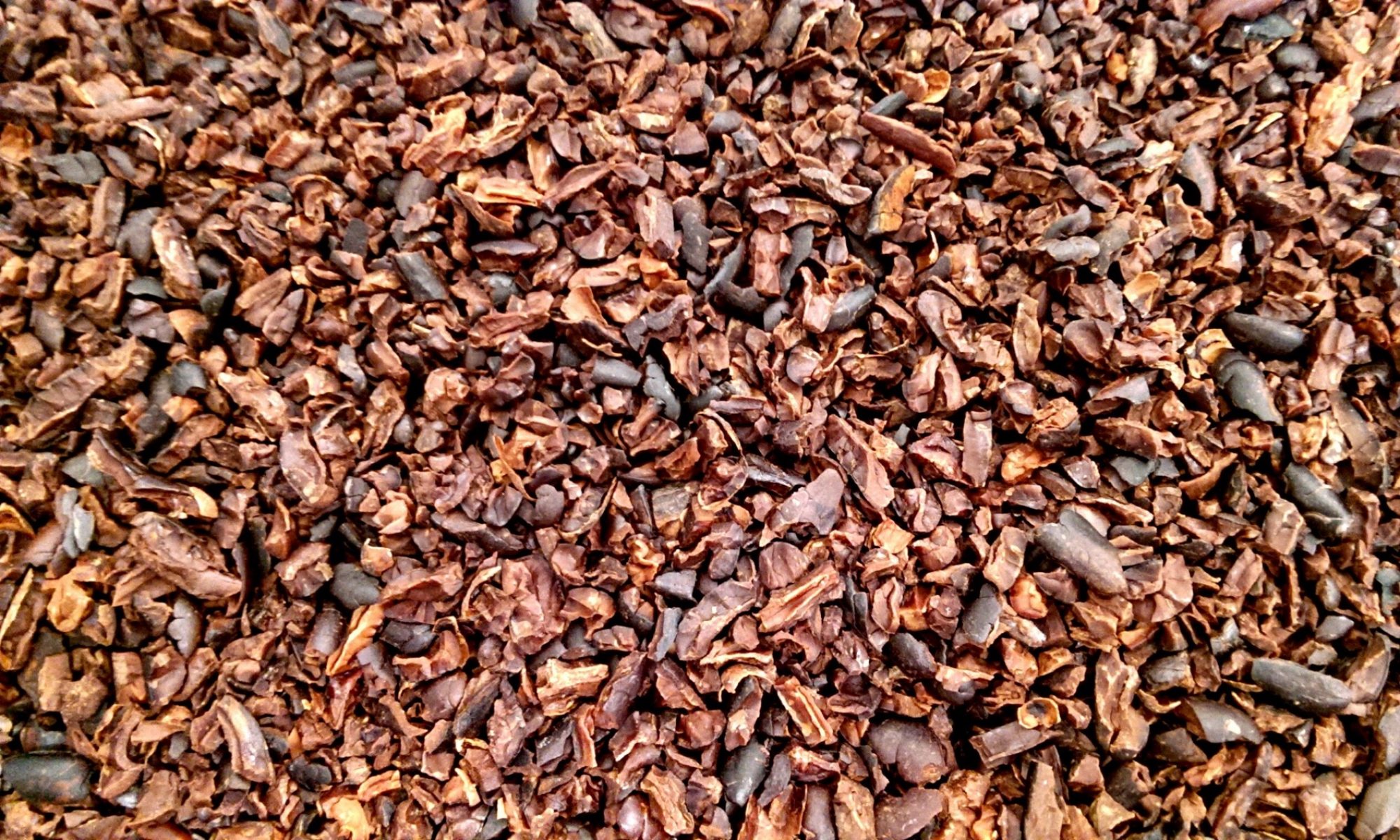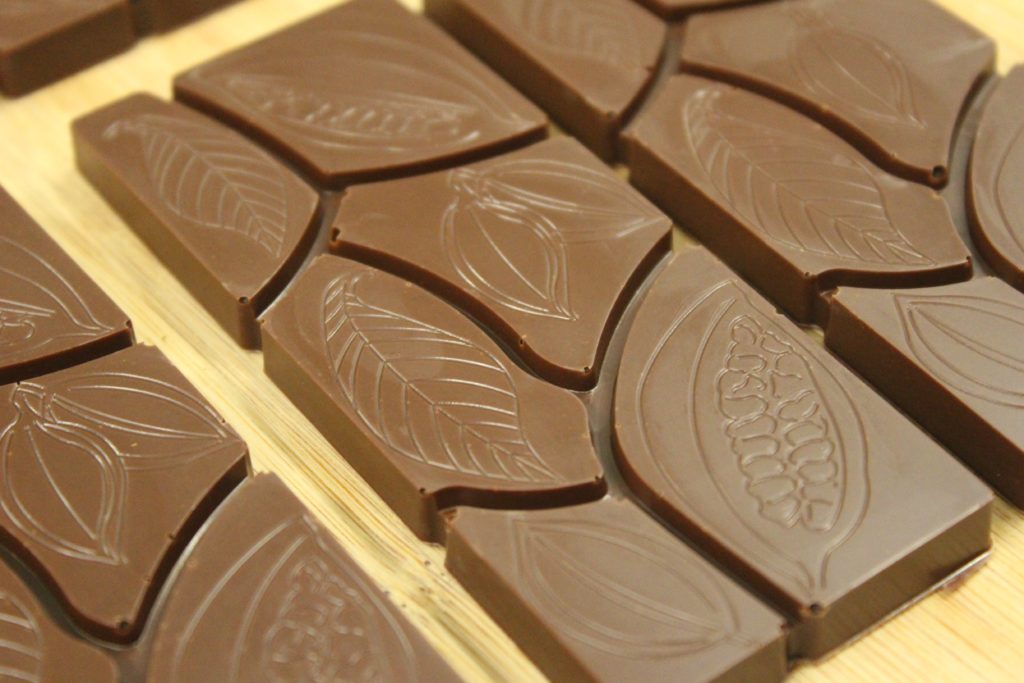- Synopsis
- A high cocoa 60% dark milk chocolate, the perfect marriage of dark and milk chocolate.
- Author
- Dom Ramsey / Damson Chocolate
- Version
- 1.0
- License
- Creative Commons Attribution 4.0 International
- Short URL
- xtc.tc/107
- Last Updated
- 21 December 2019
Ingredients
- 50% Roasted cocoa nibs
- 10% Cocoa butter
- 7% Whole Milk Powder
- 32.6% Cane Sugar
- 0.4% Sunflower Lecithin
Technical Information
- Roast: Standard (20 minutes @ 120°C)
- Grind / Conch time: Standard (24 hours for 3kg Premier grinders, 72 hours for 30kg CocoaTown melangers)
Method
- Sort and roast beans.
- After cooling, break and winnow.
- Slowly add nibs to heated melanger.
- Add pre-melted cocoa butter. This can be added in parallel with the cocoa nibs to help speed the process.
- When nibs and cocoa butter are flowing freely, slowly add the sugar. For larger batches, this can be done on the second day of the 72 hour grind.
- Once the sugar has been combined, slowly add the milk powder.
- Allow to grind / conch for prescribed time.
- One hour before the end of the cycle, add the lecithin.
- Pour into containers and allow to set.
- Temper as per the dark milk chocolate settings of your tempering machine, or half way between dark and milk temperature curves.
Notes
When using melangers to produce chocolate from nibs, we often find that viscosity is an issue, especially with milk chocolates. The lecithin and relatively high cocoa butter content in this recipe help to offset that. Don’t be afraid to increse the cocoa butter level further (up to 12%) if the viscosity of the chocolate is higher than desired, but also feel free to reduce it if the finished chocolate is flowing readily. Similarly, the lecithin can be adjusted if needed, but it usually stops being effective above levels of 0.5%.
You can either reduce the nib content or the sugar content to make room for more cocoa butter, but note that changing the sugar content will affect the overall cocoa content percentage, whereas adjusting the nibs and cocoa butter will keep the overall cocoa content ratio the same.
There are a wide range of milk powders available on the market, and we usually recommend going with a locally sourced product. Generally full fat cows milk will produce the best flavour. What we’re aiming for with this recipe is just a touch of creaminess that will take the edge off any bitterness in the cacao.
Not all cacao origins work well as a milk chocolate, so some experimentation may be required to find cacao with a flavour profile that works well with the creaminess of the milk powder. For example, beans with floral or earthy notes may work better than those with higher acidity.
We’ve also had success using buffalo milk powder, which has a similar flavour to cows milk, but is much creamier.
We like to use Sunflower Lecithin in our chocolate as this can also have a significant impact on viscosity and make moulding much easier. We use it in preference to Soy Lecithin which some people have allergies to. Again, if your chocolate flows readily you may want to omit this entirely and increase the nib content.
We find ageing the chocolate can have a significant beneficial effect on the final flavour of single origin chocolates, particularly those with high acidity. Normally this would be done after grinding and before tempering. Simply set the chocolate aside for 2-4 weeks before tempering and packaging.
License

Liqurice & Sea Salt Chocolate by XTC Chocolate is licensed under a Creative Commons Attribution 4.0 International License.
Based on a work at https://xtc.tc/107.
Permissions beyond the scope of this license may be available at https://xtcchocolate.com/licensing/.

